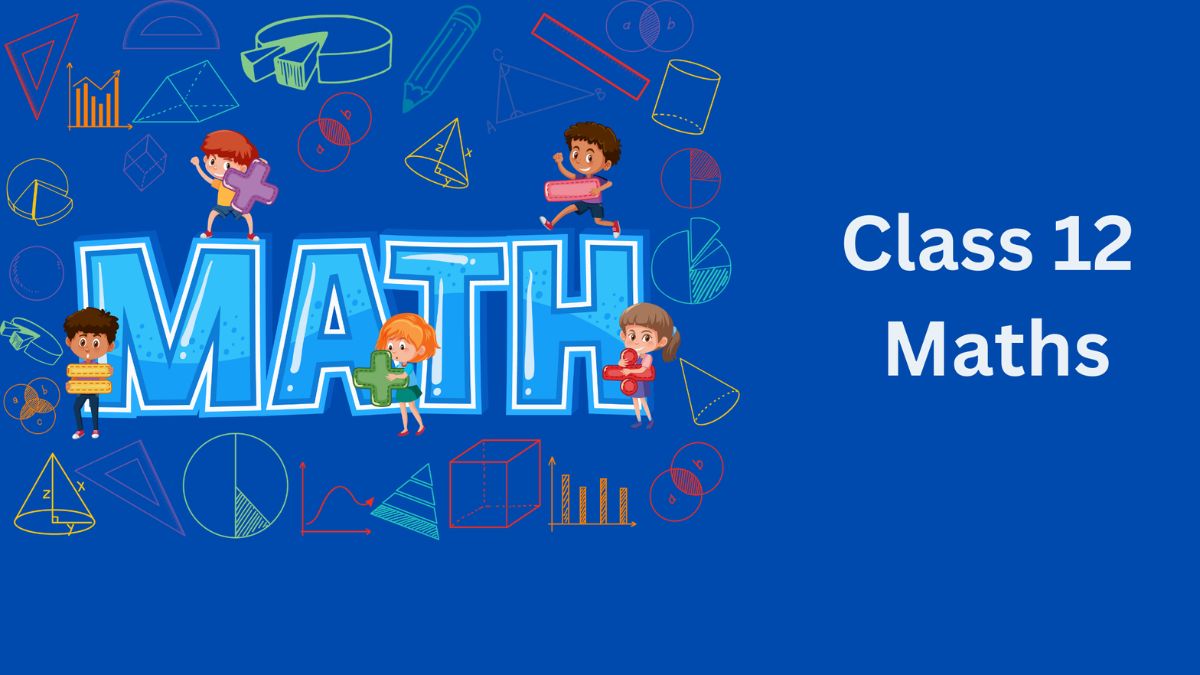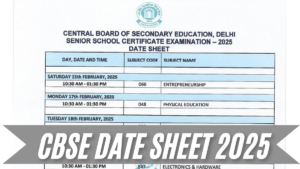The Central Board of Secondary Education has announced to conduct the CBSE Class 12th Exam 2026 between February 17, 2026 and April 09, 2026. All the students of the commerce and science stream who are to appear for the Mathematics exam will be looking forward to completing their exam preparations using the detailed CBSE Class 12 Maths Syllabus 2026.
To assist students with their preparation phase, we have shared the list of CBSE Class 12th Maths Important Formulas & Questions in the article below. Scroll down in the article and check the list of important formulas.
CBSE Class 12th Maths Important Formulas
Mathematics is one of the most important and scoring subjects in CBSE Class 12. For students aiming to secure 95+ marks in their board exams, having a clear command over formulas, theorems, and solving techniques is crucial. Since a majority of the questions in CBSE Class 12 Maths are based directly on standard formulas and their applications, memorizing and practicing them is the key to success.
In this article, we have compiled a list of chapter-wise important formulas along with some important questions that will help students revise effectively before the exams.
1. Relations and Functions
-
Reflexive, Symmetric, Transitive properties
-
Inverse of a function:
-
Composition of functions:
2. Inverse Trigonometric Functions
3. Matrices
-
-
-
Determinant properties:
-
-
If two rows/columns are identical → Determinant = 0
-
4. Determinants
-
Area of triangle:
-
Cramer’s Rule for system of equations.
5. Continuity and Differentiability
-
Derivative of inverse function:
-
Chain Rule:
-
Derivatives of trigonometric, logarithmic, exponential, and inverse functions.
6. Application of Derivatives
-
Increasing/Decreasing function test:
→ increasing
-
Maxima and Minima conditions using 1st & 2nd derivative test.
-
Rate of change formula:
7. Integrals
-
Standard integrals:
-
-
Integration by parts:
-
Substitution method:
8. Application of Integrals
-
Area under curve:
9. Differential Equations
-
General solution = Particular + Arbitrary constant
-
Linear differential equation:
Solution:
10. Vector Algebra
-
Dot product:
-
Cross product:
-
Scalar triple product:
11. Three Dimensional Geometry
-
Distance between two points:
-
Equation of line:
-
Angle between two lines:
12. Probability
-
Bayes’ theorem:
-
Conditional probability:
Vector Formulas
- A + B = B + A (Commutative Law)
- A + (B + C) = (A + B) + C (Associative Law)
- (A • B )= |P| |Q| cos θ ( Dot Product )
- (A × B )= |P| |Q| sin θ (Cross Product)
- k (A + B )= kA + kB
- A + 0 = 0 + A (Additive Identity)
Trigonometry Formulas
- sin-1(-x) = – sin-1x
- tan-1x + cot-1x = π / 2
- sin-1x + cos-1 x = π / 2
- cos-1(-x) = π – cos-1x
- cot-1(-x) = π – cot-1x
Calculus Formulas
- ∫ f(x) dx = F(x) + C
- Power Rule: ∫ xn dx = (xn+1) / (n+1) + C. (Where n ≠ -1)
- Exponential Rules: ∫ ex dx = ex + C
- ∫ ax dx = ax / ln(a) + C
- ∫ ln(x) dx = x ln(x) – x + C
- Constant Multiplication Rule: ∫ a dx = ax + C, where a is the constant.
- Reciprocal Rule: ∫ (1/x) dx = ln(x)+ C
- Sum Rules: ∫ [f(x) + g(x)] dx = ∫f(x) dx + ∫g(x) dx
- Difference Rules: ∫ [f(x) – g(x)] dx = ∫f(x) dx – ∫g(x) dx
- ∫k f(x) dx = k ∫f(x) dx, , where k is any real number.
- Integration by parts: ∫ f(x) g(x) dx = f(x) ∫ g(x) dx – ∫[d/dx f(x) × ∫ g(x) dx]dx
- ∫cos x dx = sin x + C
- ∫ sin x dx = -cos x + C
- ∫ sec2x dx = tan x + C
- ∫ cosec2x dx = -cot x + C
- ∫ sec x tan x dx = sec x + C
- ∫ cosec x cot x dx = – cosec x + C
Geometry Formulas
- Cartesian equation of a plane: lx + my + nz = d
- Distance between two points P(x1, y1, z1) and Q(x2, y2, z2): PQ = √ ((x1 – x2)2 + (y1 – y2)2 + (z1 – z2)2)
Importance of Learning CBSE Class 12th Maths Important Formulas
Below we have listed some pointers that explain the importance of learning CBSE Class 12th Maths Important Formulas. Read the pointers and read the formulas:
- Foundation for Problem-Solving – Maths questions in CBSE Class 12 heavily depend on formulas. A strong grasp of formulas ensures that students can quickly identify the right approach to solve problems.
- Saves Time in Exams – During board exams, time management is crucial. Knowing formulas by heart helps students solve questions faster without wasting time on derivations.
- Boosts Accuracy – Correct application of formulas minimizes silly mistakes and improves the chances of scoring full marks, especially in calculation-heavy questions.
- Essential for Higher Studies – Class 12 Maths formulas form the base for competitive exams like JEE, CUET, NDA, and further studies in engineering, commerce, and science streams.
- Helps in Understanding Concepts – Learning formulas isn’t about rote memorization; it deepens understanding of concepts like calculus, probability, and vectors, making problem-solving more logical.
- Improves Confidence – Memorizing and practicing formulas regularly reduces exam fear, builds confidence, and enables students to attempt all types of questions with ease.
- Supports Step-Wise Presentation – CBSE marking scheme awards marks step by step. Using correct formulas in the first step ensures students secure marks even if they make calculation errors later.










 UPMSP Center List 2026 Released, Check D...
UPMSP Center List 2026 Released, Check D...
 UP Board Class 12 Syllabus 2025-26 Out, ...
UP Board Class 12 Syllabus 2025-26 Out, ...
 CBSE Date Sheet 2025 Out, Download Class...
CBSE Date Sheet 2025 Out, Download Class...







